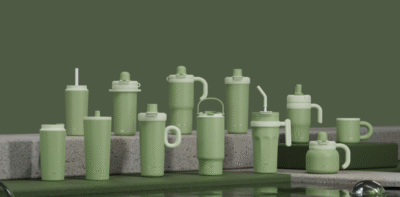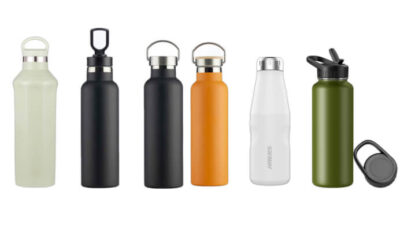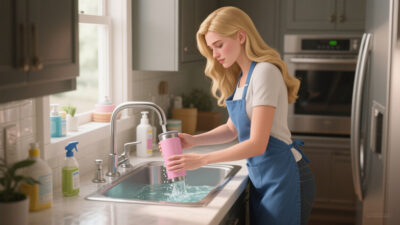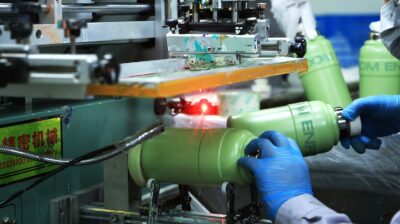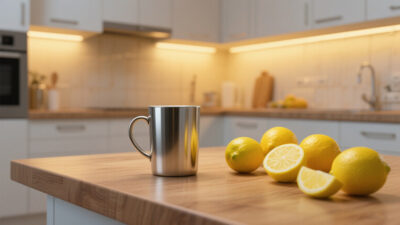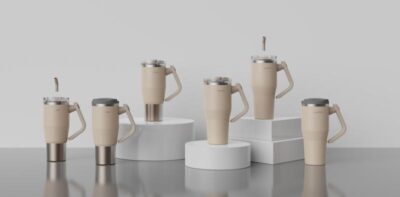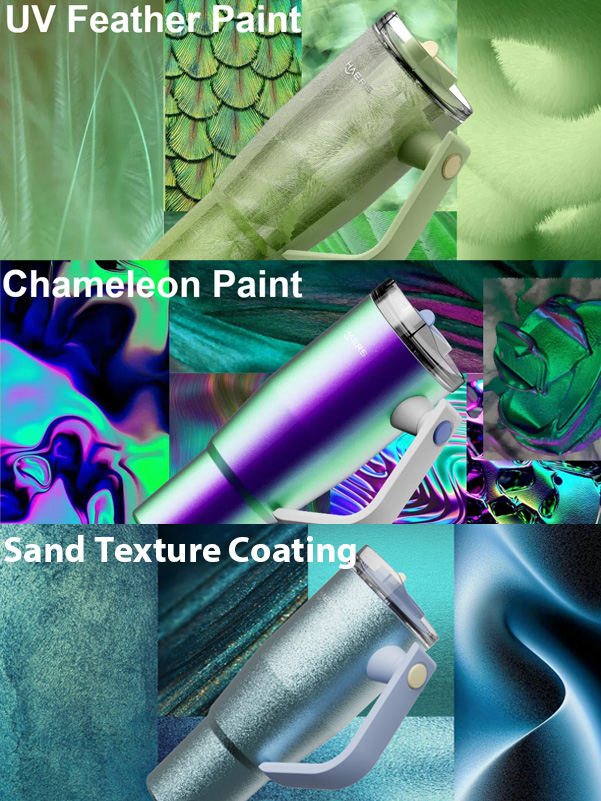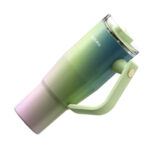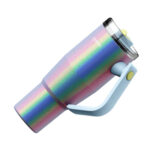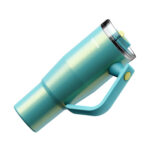How many oz in one pint?
When customers stare at a water bottle labeled “24oz” or a travel coffee mug marked “16oz”, do they ever pause—how much liquid do these numbers actually mean? Units like ounces, pints, and milliliters are encountered daily, but when brand owners choose bulk water bottles for different markets, the confusion behind these numbers often runs deeper than expected. Do these seemingly simple volume units subtly impact global sales due to conversion complexities? How exactly do these volume units convert?
Table of Contents
ToggleI. What Are the Volume Units?
Labels like “350mL”, “20oz”, and “1 gallon” are actually “capacity units” for different volume units. From kitchen cups to outdoor water bottles, volume units not only determine “how much can be held” but also decide whether products can precisely match the usage habits of global consumers.
1. Metric System
Centered on milliliters (mL) and liters (L), with 1L = 1000 mL. This is the measurement standard in most countries worldwide (e.g., China, EU), valued for its intuitive numbers and simple conversion. Following decimal conversion rules, the metric system features intuitive measurement and strong cross-regional universality, widely used in drinkware labeling across Asia, Europe, South America, and most global regions.
2. US Customary System
The US Customary System primarily uses fluid ounces (oz/ounces) and gallons (gallon). This system is deeply ingrained in US consumption scenarios.
• 1 US customary fluid ounce (fl oz) = 1/128 US liquid gallon ≈ 29.574 mL
• 1 US fluid ounce ≈ 29.574 mL, 1 US gallon = 128 ounces (≈ 3.785 liters)
In North America, “oz” is used for smaller capacities, like 8oz or 16oz coffee cups, corresponding to different drink sizes and aligning with the local “ounce-counting” consumption culture. “Gallon” is used for large capacities, like a 1-gallon sports bottle meeting “a day’s water intake” needs. This system precisely caters to North American user habits and is essential for drinkware targeting that market.
The US fluid ounce was introduced as part of the US metric reform, aiming to maintain consistency with the imperial system while keeping some differences. Compared to the imperial fluid ounce, the US fluid ounce has a slightly larger volume.
3. Imperial System
The Imperial system includes fluid ounces, gallons, and pints. Imperial fluid ounces were historically common in the UK and its former colonies. Conversions are as follows:
1 Imperial fluid ounce (fl oz) = 1/160 Imperial gallon ≈ 28.413 milliliters (≈ 28.4 mL)
The origin of the Imperial fluid ounce traces back to the UK’s traditional measurement system. The capacity of 1 Imperial ounce was defined as the volume of 1 cubic inch, stemming from the historical use of the ounce as a weight unit, not a volume unit.
1 Imperial fluid ounce is slightly smaller than the US ounce, while 1 Imperial pint equals 20 Imperial oz (≈ 568mL). Originating from British traditional measures, it was once used in Commonwealth countries. Today, however, its application is limited to a few scenarios like pubs (e.g., a pint beer glass). Its main problems are poor compatibility with mainstream systems and complex conversions, increasing cross-regional operational costs for brands. Consequently, it is less common in modern drinkware labeling and exists more as a historical measurement relic.
From a market perspective, the metric system covers most global regions, while the US system dominates North America (a key global drinkware market). Their combination “covers” major consumer groups. For example, a 500mL water cup is understood as “half a liter” by metric users and converted to ≈16.9oz (close to the common 16oz specification) by US system users, requiring no extra explanation to convey volume. Haers’ official website labels both metric and US systems, enabling products to “switch seamlessly” across markets—highlighting mL in Europe and emphasizing oz in the US—to reduce user comprehension costs and brand marketing burdens, achieving efficient global market coverage.
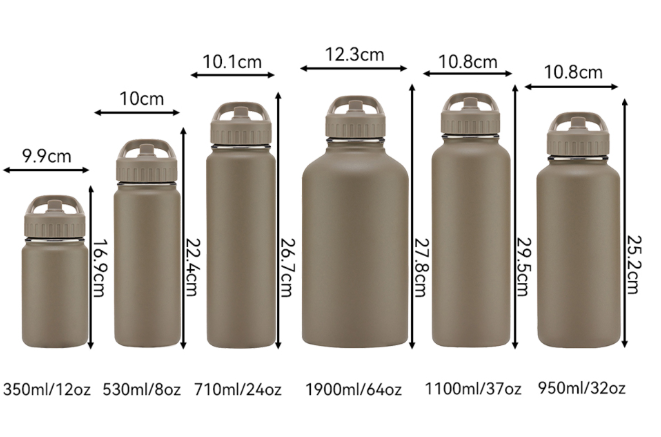
II. Quick Calculations for Common Volumes
1. How many ML in one ounce?
Conversion formula: 1 US fluid ounce (fl oz) ≈ 29.574 mL.
This conversion is widely used in North American drinkware labeling to bridge the “ounce mindset” and “milliliter cognition”. Take Haers’ product line as an example:
| Product Name | Capacity (oz) | Capacity(mL) |
|---|---|---|
| Travel Tumbler | 10 oz,17oz | 300ml, 500ml |
| BLAZER Tumbler | 32 oz,40oz | 950 mL,1200mL |
| Sports Straw Water Bottle | 12oz,16oz,18oz,22oz,25oz,32oz,40oz,64oz | 360 ml, 480ml, 530ml, 650ml, 750ml, 950ml, 1200ml,1900ml |
For brand retailers, labeling both oz and mL (e.g., “16 oz/473 mL”) allows North American consumers to quickly make decisions based on familiar ounces while meeting the milliliter cognition of other markets (“473 mL is close to the standard 500mL capacity”).
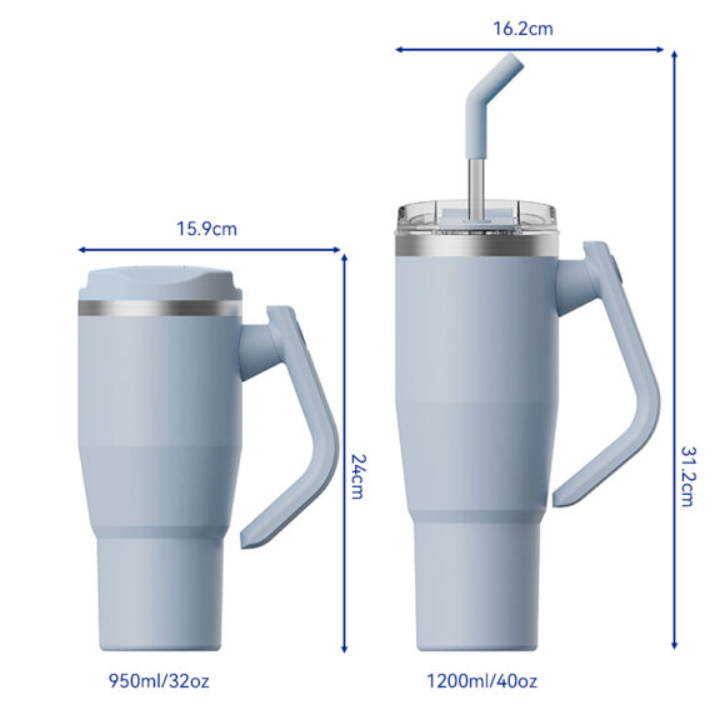
2. How many ounces in one gallon?
Conversion formula: 1 US liquid gallon (gal) = 128 US fluid ounces (fl oz) ≈ 3.785 liters (L).
| Product Type | Capacity (oz) | Capacity (gal) |
|---|---|---|
| Travel Tumbler | 10 oz,17oz | 0.07gal, 0.13gal |
| BLAZER Tumbler | 32 oz,40oz | 0.25gal,0.31gal |
| Sports Straw Water Bottle | 12oz,16oz,18oz,22oz,25oz,32oz,40oz,64oz | 0.09gal, 0.125gal, 0.14gal, 0.17gal, 0.19gal, 0.25gal,0.31gal,0.5gal |
3. How Many Oz in One Pint?
Conversion formula: 1 US liquid pint (pt) = 16 US fluid ounces (fl oz) ≈ 473.18 milliliters (mL).
| Product Type | Capacity (oz) | Capacity (pt) |
|---|---|---|
| Travel Tumbler | 10 oz,17oz | 0.625pt,1.06pt |
| BLAZER Tumbler | 32 oz,40oz | 2pt,2.5pt |
| Sports Straw Water Bottle | 12oz,16oz,18oz,22oz,25oz,32oz,40oz,64oz | 0.75pt, 1pt, 1.125pt,1.375pt, 1.5pt 2pt,2.5pt,4pt |
III. How many ounces in a water bottle?
When you pick up a cup, the answer to “how many ounces can it hold” reveals its usage scenario genes. From morning coffee to outdoor hiking, the volume design of different drinkware essentially decodes “human drinking habits” precisely.
1. How many ounces are in a coffee mug?
Common capacity range: 8-16 US fluid ounces (≈237-473 mL).
The ounces of coffee mugs are deeply bound to drink types:
8-12 oz: Matches the espresso system’s golden ratio – the volume of a single shot (1-2 oz) plus milk foam. Also aligns with the US FDA’s suggested daily caffeine limit (≤400mg, ≈12 oz coffee).
16oz: Follows the American coffee “Grande” industry standard. Its diameter-to-height ratio is 1:1.2 (approx. 89mm x 105mm). The shorter, wider design increases base contact area (≥60cm²) to improve stability against tipping in office settings. Wall thickness is controlled between 3-4mm to balance insulation and grip comfort.
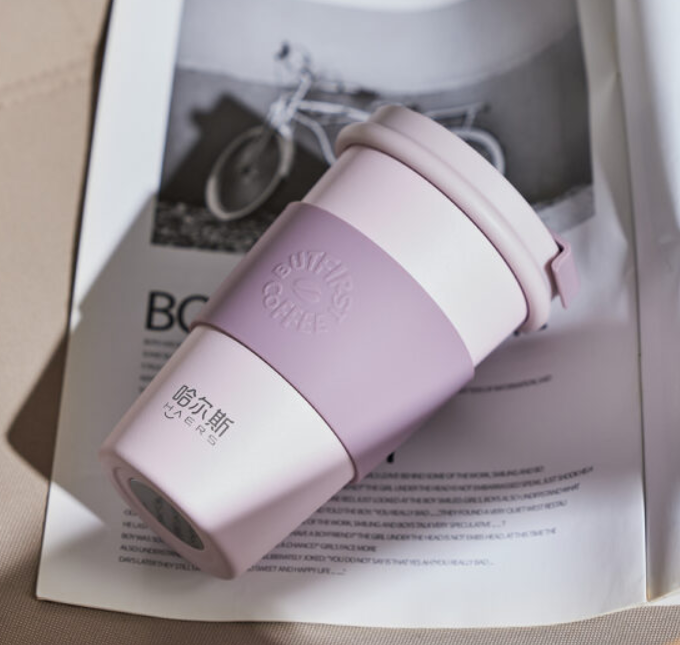
2. How many ounces in a travel mug?
Common capacity range: 16-24 oz (473-709 mL), following the ergonomic design for vehicle use.
16 oz (≈473 mL): The critical adaptation value for North American vehicle cup holders—according to SAE J1795 standards, cup holder inner diameters are generally 76-89mm, and 16 oz cups have a bottom diameter designed as 85mm (error ≤2mm) to ensure smooth insertion/removal in over 95% of vehicle models.
24 oz (≈709 mL): Adopts a waist-receding hydrodynamic design, reducing the middle diameter by 12% (from 88mm to 77mm), keeping the center of gravity offset ≤15% when full, meeting portability needs in bumpy scenarios like high-speed trains or airplanes.
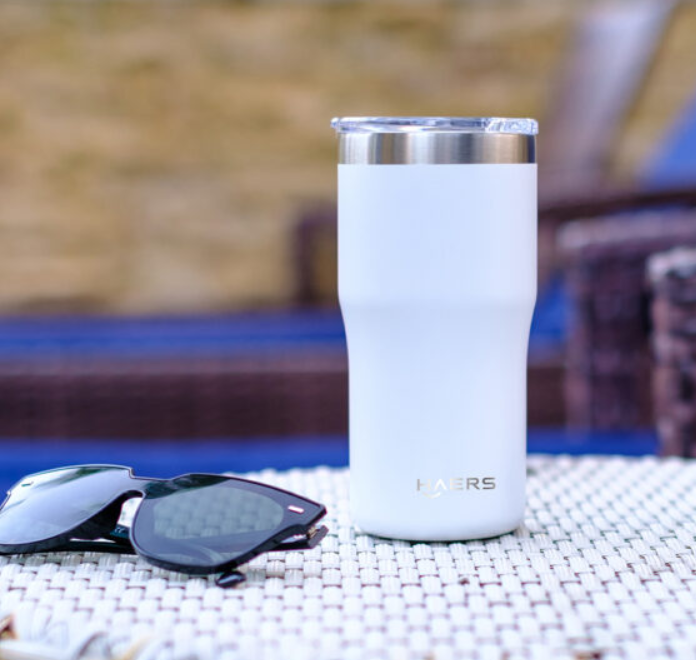
3. How many oz in an outdoor tumbler?
Common capacity range: 20-40 US fluid ounces (≈591-1200 mL).
20 oz (≈591 mL): Meets the ergonomic grip limit—total mass when full is controlled within 500g (including the cup body), delaying hand fatigue to over 30 minutes for single-hand grip.
32 oz (≈946 mL) and above: Follows the ISO 23115 outdoor drinking standard. Calculated for a 4-hour hike (200-250mL water intake per hour), this capacity covers 80% of light outdoor activity needs.
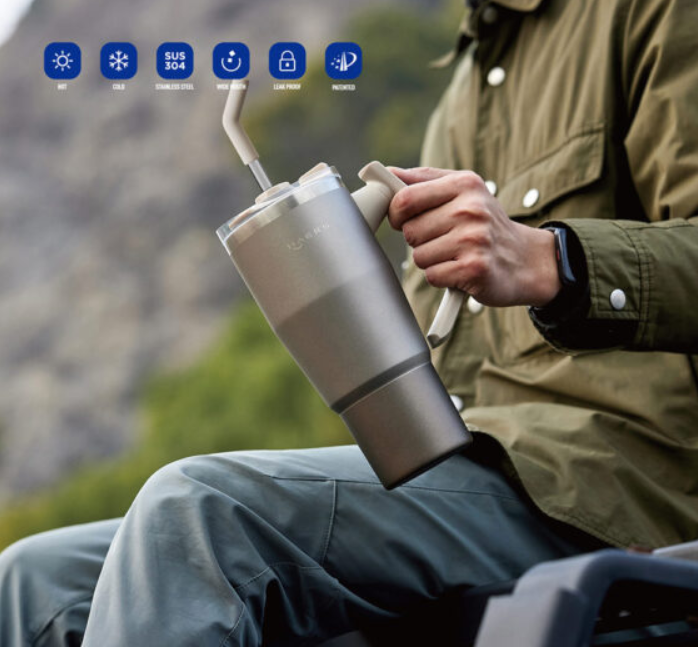
4. How many ounces in a cup?
Common capacity range: 6-12 ounces (≈177-355 mL).
6-8 ounces (≈177-237mL): Complies with the “child-safe capacity” in ISO 3838 catering cup standards (single drinking volume ≤240mL), with a cup height ≤100mm to avoid child swallowing risks.
10-12 ounces (≈296-355mL): Corresponds to the extended application of the U.S. FDA’s nutritional labeling statutory “1 cup” unit (237mL). Fast-food restaurants use 12-ounce cups (actual capacity 355mL) for the “full-cup visual effect” (liquid height accounts for 85% of the cup body) to enhance consumer psychological satisfaction.
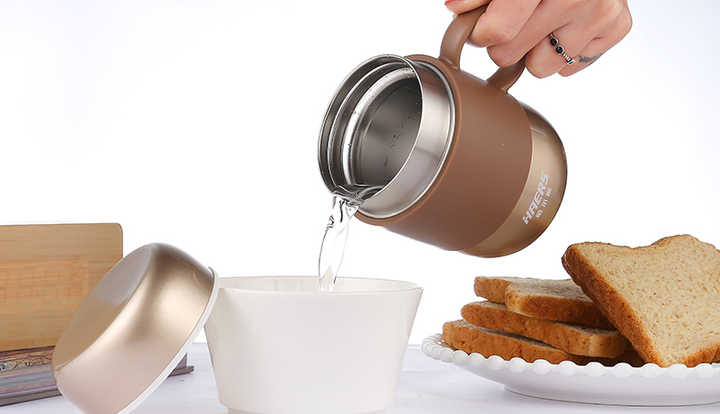
5.How many oz in a sports water bottle?
Common range: 16-64 ounces (≈473-1890 mL)
Sports water bottle capacities are indeed more varied than other drinkware types. Their design is based on hydration needs for different activities (duration, intensity, environment). Common ranges and data:
Regular Portable Type:
Capacity: 16–24 ounces(≈473–709 mL)
Scenarios: Daily commuting, short-duration sports (e.g., gym, yoga).
Standard Sports Type:
Capacity: 28–32 ounces (≈828–946 mL)
Scenarios: Running, cycling, medium-duration outdoor sports (single hydration need ≈500–1000 mL).
Large-capacity Outdoor Type:
Capacity: 40–64 ounces (≈1.18–1.89 L)
Scenarios: Long-distance hiking, camping, high-intensity training (needing water storage for prolonged periods without refills).
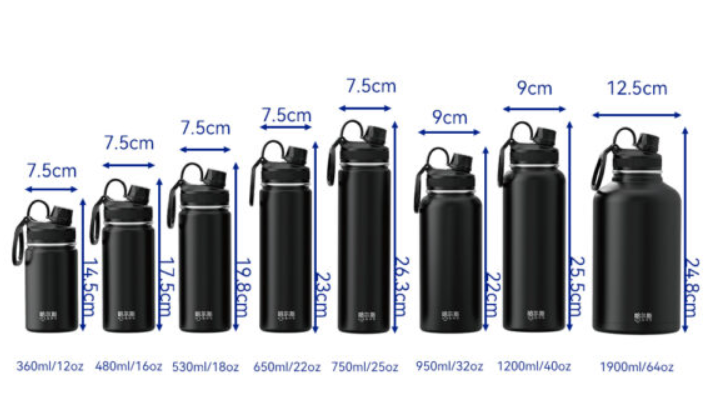
6. Capacity Benchmarks for Special-purpose Drinkware
Baby bottles: 4-8 oz (118-237 mL).Aligns with ISO 9001 infant product standards for “feeding stage capacity gradients” (0-3 months: 4 oz, 3-6 months: 6 oz, 6+ months: 8 oz).
Cocktail shakers: 16-24 oz (473-709 mL). Matches the International Bartenders Association (IBA) standard for “double mix capacity” (single cocktail: 8 oz, 16 oz makes 2 servings). Professional bartenders often use 18oz (532mL) – the balance point for comfortable one-handed shaking.
Family water storage buckets: 64-128 oz (1.89-3.78 L). Reflects the US EPA’s suggested “family single-day per-person water intake” (128 oz = 1 gallon ≈ 3.78 L/d per person).
Pour-over coffee kettles: Slim-spout kettles must be 17oz (500mL), the golden ratio for water flow control and capacity.
Use the form below to make a quick check:
Volume Converter Tool
IV. Can Cup Capacities Be Customized Arbitrarily?
When brands ask, “Can we set any custom cup capacity?”, the answer lies at the intersection of physical laws and manufacturing experience. Cup capacity is never an isolated number but an inevitable result of structural design—the stable base of a short cup limits a reasonable range of 10-14 ounces, while the portability of a slender cup naturally suits 14-22 ounces. Meanwhile, achieving a win-win between function and structure is far from easy:
The vacuum layer of double-walled insulated cups requires a 0.5-1cm heat-insulating space, directly compressing the inner container volume.
The leak-proof lid structure of narrow-mouth kettles (silicone seal ring thickness ≥3mm) limits the bottle mouth diameter and capacity upper limit.
When ceramic cups exceed 20 oz, the breakage rate increases to 3 times the normal value due to material mechanical properties.
Breaking these boundaries is not impossible, but it comes at a cost: straight-tube cups over 24 oz need enhanced anti-slip patterns, 30oz giant cups must thicken the wall, and cups under 8 ounces face strength challenges.
If a brand has special capacity needs, Haers activates its product database matching system. It searches for base molds near the desired capacity, verifies structural feasibility through engineering analysis, and proposes viable design solutions. This ensures precise alignment between the custom projects and engineering reality. Using standardized databases lowers customization costs; applying engineering principles transforms capacity needs. Every custom specification finds the optimal balance of function and user experience.


